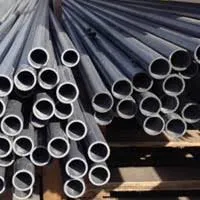
-
 Afrikaans
Afrikaans -
 Albanian
Albanian -
 Amharic
Amharic -
 Arabic
Arabic -
 Armenian
Armenian -
 Azerbaijani
Azerbaijani -
 Basque
Basque -
 Belarusian
Belarusian -
 Bengali
Bengali -
 Bosnian
Bosnian -
 Bulgarian
Bulgarian -
 Catalan
Catalan -
 Cebuano
Cebuano -
 China
China -
 China (Taiwan)
China (Taiwan) -
 Corsican
Corsican -
 Croatian
Croatian -
 Czech
Czech -
 Danish
Danish -
 Dutch
Dutch -
 English
English -
 Esperanto
Esperanto -
 Estonian
Estonian -
 Finnish
Finnish -
 French
French -
 Frisian
Frisian -
 Galician
Galician -
 Georgian
Georgian -
 German
German -
 Greek
Greek -
 Gujarati
Gujarati -
 Haitian Creole
Haitian Creole -
 hausa
hausa -
 hawaiian
hawaiian -
 Hebrew
Hebrew -
 Hindi
Hindi -
 Miao
Miao -
 Hungarian
Hungarian -
 Icelandic
Icelandic -
 igbo
igbo -
 Indonesian
Indonesian -
 irish
irish -
 Italian
Italian -
 Japanese
Japanese -
 Javanese
Javanese -
 Kannada
Kannada -
 kazakh
kazakh -
 Khmer
Khmer -
 Rwandese
Rwandese -
 Korean
Korean -
 Kurdish
Kurdish -
 Kyrgyz
Kyrgyz -
 Lao
Lao -
 Latin
Latin -
 Latvian
Latvian -
 Lithuanian
Lithuanian -
 Luxembourgish
Luxembourgish -
 Macedonian
Macedonian -
 Malgashi
Malgashi -
 Malay
Malay -
 Malayalam
Malayalam -
 Maltese
Maltese -
 Maori
Maori -
 Marathi
Marathi -
 Mongolian
Mongolian -
 Myanmar
Myanmar -
 Nepali
Nepali -
 Norwegian
Norwegian -
 Norwegian
Norwegian -
 Occitan
Occitan -
 Pashto
Pashto -
 Persian
Persian -
 Polish
Polish -
 Portuguese
Portuguese -
 Punjabi
Punjabi -
 Romanian
Romanian -
 Russian
Russian -
 Samoan
Samoan -
 Scottish Gaelic
Scottish Gaelic -
 Serbian
Serbian -
 Sesotho
Sesotho -
 Shona
Shona -
 Sindhi
Sindhi -
 Sinhala
Sinhala -
 Slovak
Slovak -
 Slovenian
Slovenian -
 Somali
Somali -
 Spanish
Spanish -
 Sundanese
Sundanese -
 Swahili
Swahili -
 Swedish
Swedish -
 Tagalog
Tagalog -
 Tajik
Tajik -
 Tamil
Tamil -
 Tatar
Tatar -
 Telugu
Telugu -
 Thai
Thai -
 Turkish
Turkish -
 Turkmen
Turkmen -
 Ukrainian
Ukrainian -
 Urdu
Urdu -
 Uighur
Uighur -
 Uzbek
Uzbek -
 Vietnamese
Vietnamese -
 Welsh
Welsh -
 Bantu
Bantu -
 Yiddish
Yiddish -
 Yoruba
Yoruba -
 Zulu
Zulu
pvc frp pipe
Understanding PVC and FRP Pipes Benefits and Applications
In recent years, the demand for efficient and durable piping solutions has led to the increased popularity of PVC (Polyvinyl Chloride) and FRP (Fiberglass Reinforced Plastic) pipes. Both materials offer unique advantages, making them suitable for a variety of applications in construction, plumbing, and industrial sectors. This article delves into the characteristics of PVC and FRP pipes, their benefits, and where they are commonly used.
What are PVC and FRP Pipes?
PVC pipes are made from a synthetic plastic polymer that is lightweight, resilient, and resistant to corrosion. The versatility of PVC makes it an ideal choice for numerous applications, including plumbing, drainage, and irrigation systems.
On the other hand, FRP pipes are composed of a thermosetting resin reinforced with fiberglass. This combination forms a strong and lightweight material that boasts high tensile strength and resistance to harsh environmental conditions. FRP pipes are commonly used in sectors requiring high durability and resistance to chemicals, such as wastewater management and chemical processing industries.
Benefits of PVC Pipes
1. Corrosion Resistance One of the primary advantages of PVC pipes is their resistance to corrosion. Unlike metal pipes that can rust over time, PVC does not corrode, ensuring longevity and reliability in water transport.
2. Low Maintenance PVC pipes require minimal maintenance, contributing to their cost-effectiveness over time. Their smooth interior surfaces help reduce friction, allowing for efficient water flow with less buildup of sediments.
3. Lightweight and Easy to Handle The lightweight nature of PVC makes it easy to transport and install, reducing labor costs associated with piping projects.
4. Cost-Effective Due to their low production costs and longevity, PVC pipes are generally more affordable than other piping options, making them a popular choice among contractors and builders.
pvc frp pipe

Benefits of FRP Pipes
1. High Strength-to-Weight Ratio FRP pipes possess an excellent strength-to-weight ratio, making them strong yet lightweight. This property makes transportation and installation less cumbersome compared to traditional piping materials.
2. Chemical Resistance FRP pipes are highly resistant to chemicals, making them suitable for industries that handle corrosive substances. They can withstand exposure to various chemicals without degrading, which is crucial for ensuring safety and integrity in operations.
3. Temperature Tolerance FRP pipes offer a good performance in a broad range of temperatures, making them suitable for various applications, from hot water transport to storing chemicals.
4. Long Lifespan With minimal maintenance requirements and resistance to environmental factors, FRP pipes can last several decades, providing a reliable solution for long-term projects.
Applications of PVC and FRP Pipes
PVC pipes are widely used in residential plumbing systems, irrigation, drainage systems, and various industrial applications. Their versatility means they can easily adapt to numerous environments, making them a go-to option for plumbing engineers.
FRP pipes, on the other hand, find their primary applications in industries that require high durability and resistance to corrosive materials. Common uses include wastewater treatment plants, chemical processing facilities, and oil and gas operations. Their strength and compatibility with harsh chemicals make them an optimal choice for critical infrastructures.
Conclusion
Both PVC and FRP pipes represent significant advancements in piping technology, each offering its own set of advantages tailored to specific needs. PVC is favored for its cost-effectiveness and ease of handling, while FRP is celebrated for its strength and resistance to challenging environments. Understanding the characteristics and benefits of each material allows engineers, contractors, and industries to make informed decisions when selecting the right piping solutions for their projects. As demand for efficient and sustainable solutions continues to grow, we can expect the applications of PVC and FRP pipes to expand further, providing effective solutions for modern infrastructure challenges.









